Top 7 Posts of 2019
Each month we work hard to bring you content of interest to you and news you can use. From tactical takeaways to strategic planning to CEO profiles that intrigue, here are the most-read stories of the year.
What kind of content would you like to see posted to vaceos.org? More CEOs profiles? More business tips? Is there a specific topic you would like covered? Please, let us know!
MOST-READ STORY OF 2019:
COLAB President Steps Away and Into Innovation (Video+)(#1)
For Eddie O’Leary, president of COLAB, one of the best business decisions he’s ever made was to step away from it.
Here’s how the other most-viewed posts faired.
TOP 7 COUNTDOWN: 2019 VACEOs.ORG STORIES OF THE YEAR

(Video+)(#7)
JJ White opens up from his podcast studio about his business and his plans to shape the Council during his tenure as Chair.

by Warren Whitney (VACEOs Sponsor)(#6)
Here are the 6 key questions to ask when assessing your MSP relationships or when evaluating a new one.

by Partner MD (VACEOs Sponsor)(#5)
Running a business can be extremely stressful. Here are 3 steps to help you manage the unique stressors you face.

of Charles E. McCabe Leadership Award (#4)
We are pleased to announce that Arlene Lee, President of R.E. Lee Companies (Charlottesville) has been awarded the Charles E. McCabe Leadership Award.
How to Calculate the Value of Your Business
by Transact Capital (VACEOs Sponsor)(#3)
A company’s worth is impacted by any decisions that boost its EBITDA or reduces perceived risk to the buyer. Here’s how to calculate your earnings.
Fueled for Success: Q&A with Tiger Fuel President Gordon Sutton
(Video+)(#2)
With an employee count topping 270, Tiger Fuel is a successful, large-scale operation. What fuels this company’s success? President Gordon Sutton shares all.

For Eddie O’Leary, president of COLAB, one of the best business decisions he’s ever made was to step away from it.
How to Know If a Fractional CFO Is Right for Your Business
You are the CEO of a growing business. Do you need to:
- Spend more time in areas of the business where you add the most value?
- Maximize cash?
- Add an operational finance perspective to your team?
- Update your strategic plan?
- Raise capital to grow your business?
- Add a trusted advisor to your executive team?
- Develop an exit strategy for your business?
- If you answered yes to one or more of these questions, it could be time to get an experienced CFO on your team.
You may have thought about hiring a full-time CFO but held off given cost. Or perhaps you were concerned that you do not have enough work to keep a full-time CFO challenged. There is an alternative: You can engage an experienced CFO on a part-time or project basis.
By hiring a fractional CFO, you’re instantly gaining access to all the knowledge, experience and lessons learned by this CFO over a career. All at a significant cost savings to you.
Jay Nathanson, COO of Image Group, found it to be “a very, efficient way to use expertise.” Adding, “It really became a great opportunity for me to be able to grow the business without making the investments of full-time people.”
Building on my 35 years of experience, including serving as a full-time CFO for six companies and as a fractional CFO for others, I share several scenarios which describe situations where a fractional CFO might be able to help you.
YOU KNOW YOU NEED A FRACTIONAL CFO WHEN… (7 SCENARIOS)
Scenario #1: You Need to Spend More Time in Areas Where You Add the Most Value
If you’re spending more time in planning and forecasting, contract negotiations and interactions with investors, and less time with customers, in strategy development and in other areas where you excel, it’s time to engage a seasoned CFO. This executive will free you up, enabling you to add greater value to the business.
Scenario #2: You Need to Maximize Cash
You understand that cash is king. You need the ability to forecast future performance, staying on top of cash forecasts, debt covenants, receivables and payables. You also need creativity in the use of bank and other kinds of debt. An experienced CFO can help you maximize cash at the lowest cost.
Scenario #3: You Need an Operational Finance Perspective
You are getting accurate historical financial information; however, you are not getting meaningful analysis and insights from such information to drive your business forward. The right CFO will bring significant operational finance experience to the business, enabling you to fully understand historical performance, get the right metrics in place and more.
Scenario #4: You Need to Update Your Strategic Plan
As your business grows, there are many places where you can invest limited resources: sales and marketing, product development, customer success and more. To get the best return requires an understanding of customer issues, customer and product profitability, the competitive landscape and more. An experienced CFO can link financials and strategy, helping develop a plan which will increase your odds of success.
Scenario #5: You Need Capital to Grow Your Business
To execute your plan, you need to invest more in sales and marketing, customer success and new product development. This requires additional capital. Engaging a CFO skilled in raising capital will help you negotiate the best deal, minimizing dilution.
Scenario #6: You Need a Trusted Advisor
As the business grows, you are encountering a range of issues and questions, from personnel (e.g., what incentive program is right?) to tax (e.g., do I have sales or use tax exposure?). You need someone on your team with significant experience across many businesses and circumstances, someone who understands and has been around different C-Suite roles. Engaging an experienced CFO will help you get to the right answer quickly.
Scenario #7: You Need an Exit Strategy
Positioning your business for sale is not cut and dry. If you’re considering a sale in the next few years, now is the time to prepare. To get the most value, you need the advice of a CFO skilled in buying and selling companies.

Bobby Jenkins, Managing Director, Fahrenheit Advisors (Charlottesville), is an accomplished executive with 35 years’ experience and a demonstrated track record in diverse businesses and circumstances. Working with public and private companies, large and small, he has played a key role in increasing equity value for stakeholders. His experience and skills position him well now to add value to Fahrenheit clients, particularly in engagements related to business planning, capital raises, performance management and restructuring.
EDITOR’S NOTE: Image and content provided by Fahrenheit Advisors. This post article was originally posted here. Fahrenheit Advisors is a Sponsor of Virginia Council of CEOs.
Keys to Improving Employee Relationships and Productivity
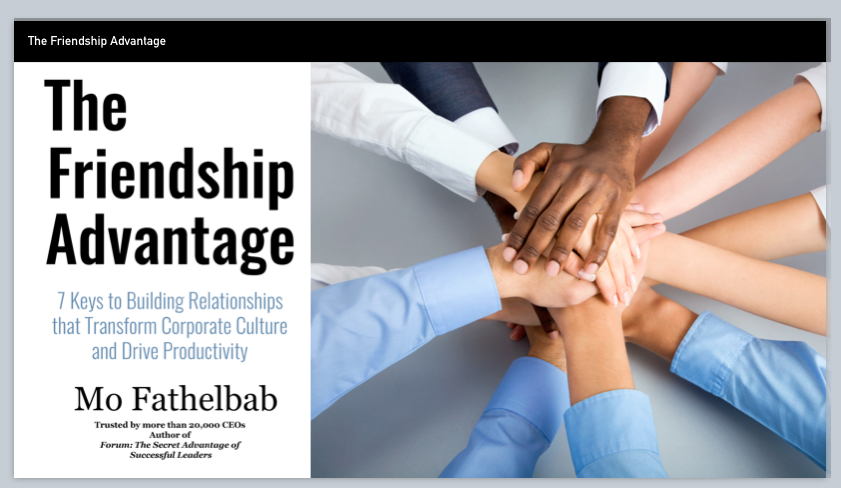
Lifelong friendships are often developed within a confidential peer roundtable setting, and it’s no wonder why. When certain principles of trust and candor are followed, and experiences are shared as part of a “no advice” protocol, nothing is off limits. It’s not uncommon to hear, “I’m closer to this group than I am my best friends.”
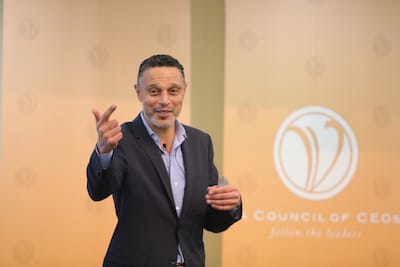
“So, initially, that really warmed my heart,” he told the VACEOs Quarterly Luncheon audience on January 24. “But then it started bothering me, because the reason we have these roundtables is not so that we would have better relationships than we have in the rest of your life. It’s so that the roundtables can help you be a better person in the rest of your life.”
Fathelbab is often called in to train and coach VACEOs Roundtable members on how to get the most out of their roundtable experience. In fact, his book Forum: The Secret Advantage of Successful Leaders is required reading for all new members.
“Having friends at work has profound impact on productivity, happiness and company culture,” says Fathelbab. At the luncheon event, Mo introduced his new book, The Friendship Advantage: 7 Keys to Building Relationships that Transform Corporate Culture and Drive Productivity. The content features guiding principles to help you be a better person and leader, and viable ways to help you strengthen employee bonds in your organization.
SUSPEND JUDGEMENT, HAVE SOME FUN, BE VULNERABLE …
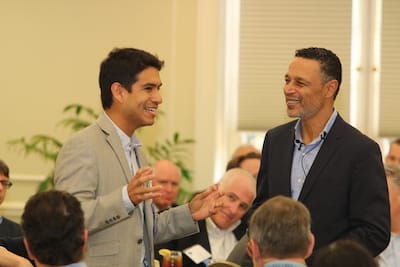
For business owners, The Friendship Advantage promises to help them strengthen the bonds that improve employee productivity, happiness and well-being, as well as boost bottom lines through higher retention rates and a richer company culture.
But it’s not easy work being vulnerable and free of judgment, as we learned during Mo’s highly interactive presentation. After one exercise, attendees declared it felt “cathartic” and “fulfilling” to open themselves up so completely to an unknown person at their table. They felt “human” and “real.”
Now, imagine the possibilities.
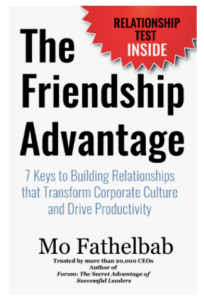
- Judgment Free
- Mischievous Fun
- Vulnerability
- Reliability
- Shared Purpose and Values
- Sharing and Generosity
- Kind Truth
*Source: Mo Fathelbab Presentation, “The Friendship Advantage;” January 24, 2019; VACEOs Quarterly Luncheon.
Related articles:
- 7 Benefits of Joining a CEO Peer-to-Peer Roundtable
- VACEOs CEO Roundtable Experience: 5 Frequently Asked Questions
- Guided by the Gestalt Protocol, Peer Groups Offer VACEOs Members a Safe Haven
Better Work-Life Integration: Myth or Attainable Goal?
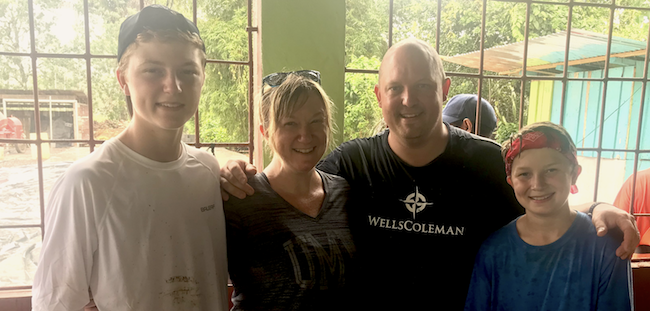
George Forsythe finds balance by doing volunteer work in Costa Rica with his family and a handful of clients and friends.
Business owners, whether they run small or large organizations, are notorious for working long hours. But should we consider that that’s simply the price one pays for being an entrepreneur? Or should we diligently seek work-life harmony? Is there real value in that pursuit?
“Undeniably so,” says Danessa Knaupp, Principal, Avenue 8. “Leaders who feel successful and well balanced at home and at work are typically calmer in the face of stress and able to relate to others who are feeling stretched by their responsibilities. That sense of empathy is often a key differentiator between a good leader and a great one.”
Knaupp’s experience as an executive coach has also taught her that a better balanced CEO is a more productive leader. “When CEOs are able to better balance their time between rest, work and play, they often see leaps in productivity at work, stronger relationships at home, and an overall deeper ability to tolerate the daily ups and downs leadership delivers,” she explains.
FROM NEVER SAYING NO TO FOUR-WAY WIN: ONE CEO’S JOURNEY
After finding himself at a balance breaking point years ago, George Forsythe, Managing Partner with WellsColeman, finally found a way to successfully integrate his work with his home life.
“While I was rising up on my way to becoming a managing partner, everything was timed,” explains Forsythe. “I never said no, and I struggled with how much I could fit into an already-packed day. You do all that you can, and at the end of the day, there’s a breaking point, right? There are only so many hours in a day for your health and relationships.”
He began to take regular trips to a remote cabin with his wife to decompress. “My wife says that having that place saved my life, in the sense that the path I was on wasn’t healthy and sustainable,” Forsythe says.
Forsythe actively pursued a better version of himself. He invested in research and professional coaches, and attended leadership seminars, workshops and webinars. But it was a book by Stewart Friedman that resonated with him the most.
“I found that Total Leadership by Stewart Friedman did the best job of explaining Work/Life Integration and how it will make you a better leader,” says Forsythe. VACEOs Members participated in a day-long workshop with Wharton professor and bestselling author Friedman in 2017, thanks to Forsythe’s recommendation.
The concept of a “four-way win” – the perfect integration of work, home, community and self –especially resonated with Forsythe. “The big idea is that it’s possible to create value for the different parts – for work, home, community and your private self, the domain of mind, body and spirit – in ways that you probably didn’t think about before,” according to Friedman. “It doesn’t have to be a tradeoff. Most people operate in a world of thinking about sacrifice as a necessity – that you have to give up something in one part of your life in order to achieve success in another part.”
“The trip was amazing! It was the hardest work I’ve ever done. At one point, I estimated that I personally hoisted over 1,000 five-gallon buckets of rock and sand into the mixer.” – George Forsythe
It’s rare to consistently succeed on all fronts, Forsythe admits. But we recently caught up with him when he was working hard on the community side – just hours before he headed to Costa Rica with his family and a handful of clients and friends for eight days of volunteer work through the Courts for Kids organization. Their goal: build a multi-purpose sports court for a small village of roughly 300 people in a town about four hours north of San José.
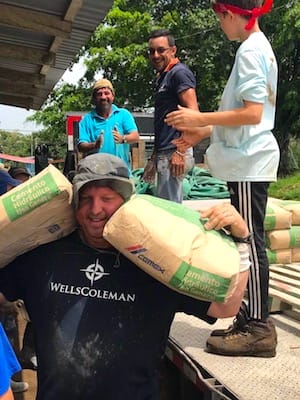
“The trip was amazing! It was the hardest work I’ve ever done. At one point, I estimated that I personally hoisted over 1,000 five-gallon buckets of rock and sand into the mixer. We immersed ourselves among the people in the village. We’re hopeful that our sons, Sean (14) and Patrick (12), can learn from those who don’t have so many material belongings and focus on what’s truly important in life.”
Some highlights of the trip? Long discussions with the villagers (who spoke no English) and, of course, playing on the courts with them after the work was completed.
“I got to dust off my high school Spanish, and by the end of the week, I was having hour-long conversations with locals,” says Forsythe. “Our range of topics included food, fishing, finance and politics. I’ll remember this trip forever.”
How did this CEO go from never saying no to a huge, four-way win?
MAKE A PLAN. PAUSE REGULARLY.
Forsythe began his journey by looking inward and then making a plan.
“I approached looking at Work-Life Integration the same as running an organization,” he explains. “It starts with a solid mission, vision and values and is followed up with some method of accountability to achieve the best results.” He also finds real value in a meditation and yoga practice.
Danessa Knaupp agrees that reflection and accountability are great tools. “I recommend that all leaders adopt a pause practice and reflect regularly, and I also recommend that leaders have a neutral accountability partner – whether that is a coach or trusted peer – to help them consider their path and activities as an observer.”
Knaupp reports that the pause practice can be as formal as meditation (she loves Headspace and Deepak Chopra’s meditation app) or as informal as sitting quietly on a deck at the end of a long day for five minutes while focusing on being present. Reflection can also take the form of journaling or dictating notes into your phone.
“Reflection helps leaders focus on what really matters by allowing them to observe themselves rather than simply react,” says Knaupp.
What methods or tools have you found to help you achieve a better work- life balance? Leave a comment. We’d love to know!
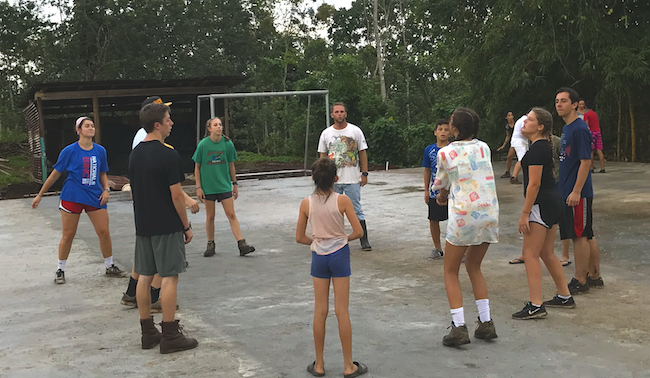
After eight days of hard work, volunteers and members of the community enjoy the court.
Dear CEO: Your Decision-Making Process Is Holding You Back
The average person makes more than 35,000 decisions in a typical day. “We are decision-making machines,” says Executive Coach Danessa Knaupp. “We’re making thousands of decisions a day – all the time – so naturally we develop a shorthand.” But, Knaupp cautioned during a recent Knowledge Network luncheon, that shorthand could be holding us back.
“People who rise to positions of leadership are widely regarded as good decision-makers,“ she explained. “You get rewarded by the small and large decisions you make, over and over again. But the number-one reason leaders fail is they stick to a process that has delivered them up to a point but cannot deliver them further.”
Her advice?
- Change your perspective (realize the potential pitfalls of your shorthand)
- Realize the information you’re taking in is an assertion or opinion, NOT a fact
- Broaden your perspective
Check Your Perspective. It’s Probably Skewed
Knaupp teaches that all decisions we make flow up a Ladder of Inference. First, we select or gather data. The trouble is, our previous experiences affect how we perceive that information. For example, one CEO might look at an image and see a random putting green in the middle of a pond; another, one of the most iconic holes on the PGA tour. It’s all about perspective.
“We have a set of experiences – all of us – where we sit in a space with a huge pool of data and we select that data using our distinctions,” says Knaupp. “Then we make assumptions about that data. We draw conclusions. Those conclusions form beliefs.” From there, we make decisions. And this is where our shorthand can get us into trouble. Shorthand is very powerful, but it can handicap us. Once we’ve formed a set of beliefs, we’re continually processing data selectively based on those beliefs.
Two Important Things to Know About the Ladder of Inference
- Realize that the data before you is a tiny faction of the actual information available to you to make a decision.
- Realize that what you believe is influencing any action you take.
So the next time you gather data on the flow up the Ladder of Inference, ask yourself, “Is this a fact, an assertion or an opinion?”
Great Leaders Distinguish Between Facts, Assertions and Opinions*
- Fact: Something demonstrated to exist or known to have existed; an objective state that can be measured.
- Assertion: Something declared or stated positively that cannot be objectively proven.
- Opinion: A belief or conclusion held with confidence but not substantiated.
“The VACEOs roundtable experience offers leaders an opportunity to gather a broad set of perspectives on the challenges they face. Those confidential conversations allow each to broaden his or her view, noticing opportunities in a different way. By expanding perspective, leaders expand their potential solution sets in a way that is nearly impossible to do alone.”- Danessa Knaupp, Founder and CEO, Avenue 8 Advisors.
Knaupp says that peer groups like the Council can be a useful tool for broadening our perspective. “The VACEOs roundtable experience offers leaders an opportunity to gather a broad set of perspectives on the challenges they face. Those confidential conversations allow each to broaden his or her view, noticing opportunities in a different way. By expanding perspective, leaders expand their potential solution sets in a way that is nearly impossible to do alone.”
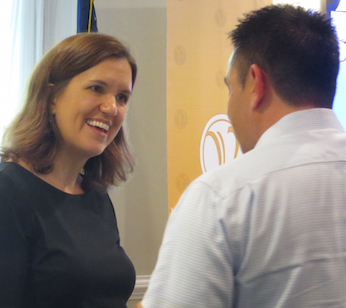
Summing It Up: How to Shift Your Perspective:
- Come down from your ladder.
- Explore facts vs. assertions.
- Seek ways to broaden your perspective.
*Source: “Shifting Your Leadership Perspective” VACEOs Knowledge Network presentation by Danessa Knaupp, Founder and CEO, Executive Coach, Avenue 8 Advisors.


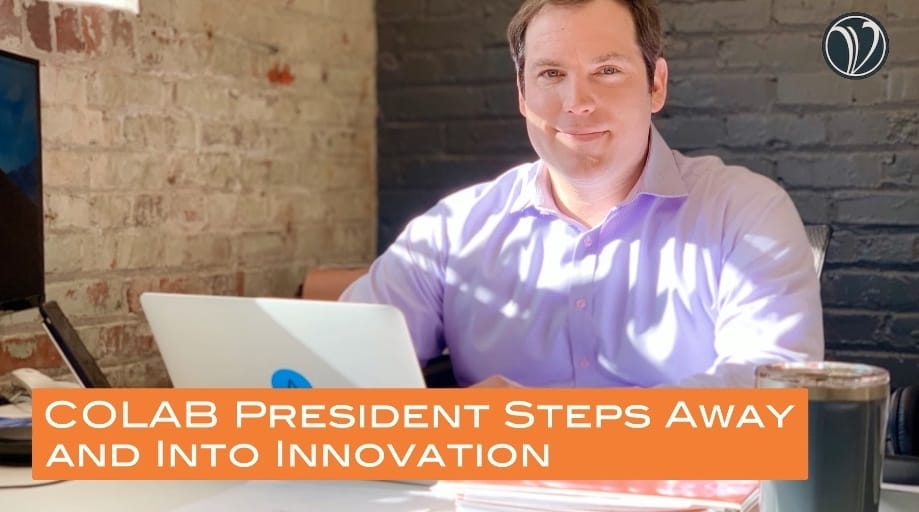



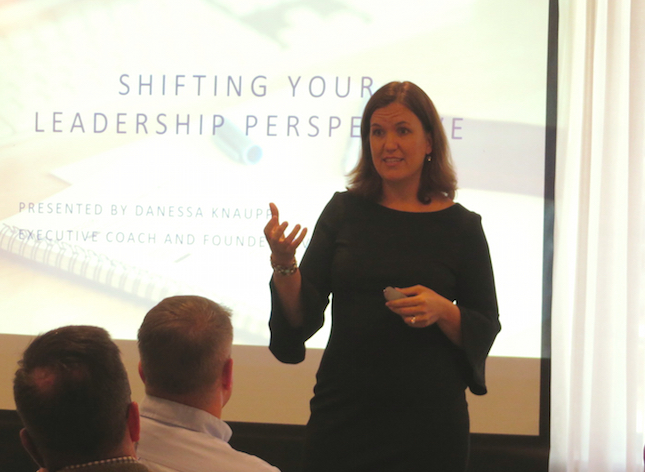


Recent Comments